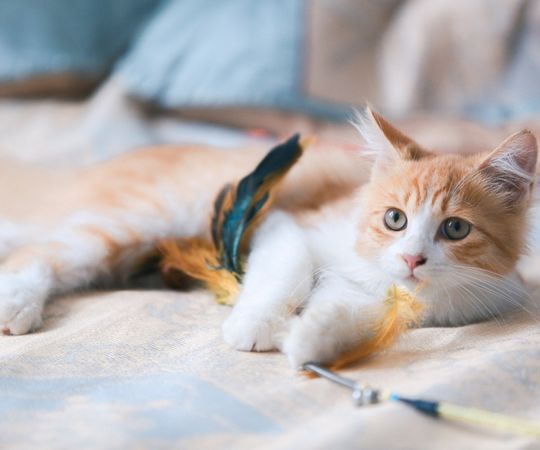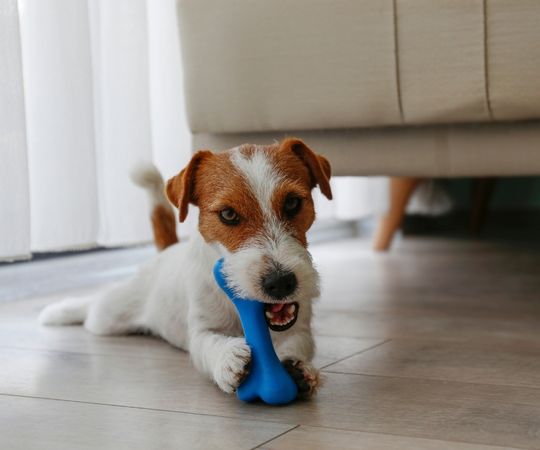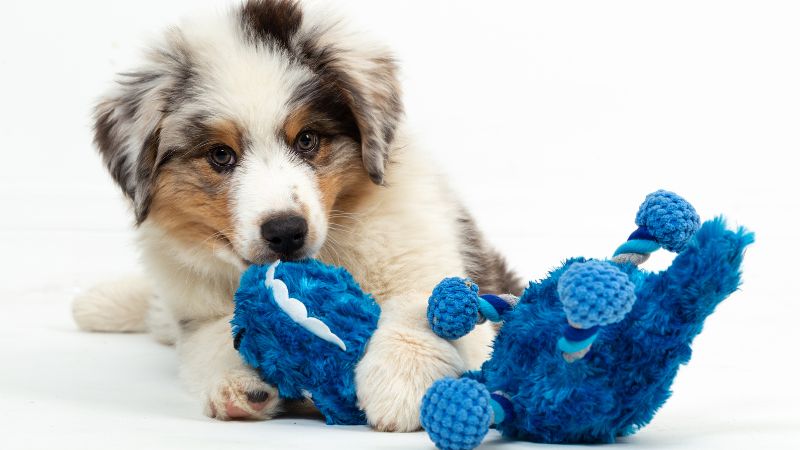
Getting a new puppy at 8 weeks old is exciting, but choosing the right toys can feel overwhelming. Your tiny puppy needs the best toys that are safe, age-appropriate, and help with their development during this crucial stage.
Continue reading to discover the features to look for in puppy toys, the types that best suit different needs, and how to ensure your furry friend’s safety during playtime.
What Makes the Best Puppy Toys?
The best toys for your 8-week-old puppy should match their specific developmental stage while prioritizing safety through the use of appropriate materials and sizing. Your puppy’s breed size also plays a crucial role in selecting the right toys for their mouth and energy levels.
Puppy Developmental Needs
At 8 weeks old, your puppy is going through rapid physical and mental growth. Their baby teeth are coming in, which means they need safe chew toys to relieve teething pain.
Mental stimulation is just as important as physical relief. Your pup’s brain is developing quickly and needs engaging activities. Interactive toys help build problem-solving skills.
Puppies at this age learn through play. Toys that make sounds or move help develop their natural hunting instincts. These toys also teach bite control and proper play behavior.
Socialization happens through toy play, too. Soft plush toys can provide comfort when your pup feels anxious or lonely. This helps them adjust to their new home.
Your 8-week-old puppy needs toys that challenge them without being too difficult. Simple puzzle toys or treat-dispensing balls work well for this age group.
Safety and Material Considerations
Non-toxic materials are essential for puppy toys. Your puppy will chew and mouth everything, so avoid toys with harmful chemicals or dyes. Look for toys made from natural rubber, food-grade silicone, or organic cotton. These materials are safe if your puppy swallows small pieces. Avoid toys with small removable parts like buttons, bells, or plastic eyes. These can become choking hazards or cause intestinal blockages if swallowed.
Check toy durability before giving it to your puppy. Toys that break easily can create cracks, loose pieces, or sharp edges that could hurt your puppy. Soft toys should have reinforced seams and no loose stuffing.
Read labels carefully and choose toys from reputable pet brands. Cheap toys often use unsafe materials or poor construction methods.
Toy Size and Breed Factors
Toys should be large enough that your puppy cannot swallow them whole. A simple rule: Select toys larger than your dog’s mouth opening to prevent choking hazards.
Your puppy’s breed, size, and energy level matter when choosing toys.
Breed Size Matters
- Small breeds (Chihuahuas, Yorkies) → Need smaller, lightweight toys that fit their tiny mouths and delicate teeth.
- Large breeds (Labs, Shepherds) → Can handle bigger toys, but still require puppy-specific versions (adult dog toys may be too hard for developing jaws).
Play Style & Energy Level
- High-energy breeds (Border Collies, Jack Russells) → Thrive with interactive & puzzle toys.
- Calmer breeds (Bassett Hounds, Bulldogs) → Often prefer soft comfort toys for gentle chewing.
The Importance of Choosing the Right Puppy Toys
Picking the right toys for your puppy affects their physical and mental growth. The wrong toys can harm your puppy or slow down their learning.
The right toys help with these important areas:
- Teething relief – Reduces gum pain and discomfort
- Mental stimulation – Keeps your pup’s brain active
- Physical exercise – Helps burn energy and build strength
- Behavior training – Teaches good habits early
Different toy types serve different purposes. Chew toys help with teething while interactive toys challenge their mind.
Your puppy learns through play during their first few months. The toys you choose now shape how they interact with the world later. The time you spend choosing good toys pays off in your puppy’s health and happiness. Smart toy choices make training easier and keep your puppy safe.
Best Toy Types for 8 Week Old Puppies
At 8 weeks old, your puppy needs specific types of toys that address teething discomfort, mental development, and emotional comfort. The three main categories include chew toys for soothing sore gums, puzzle toys for brain development, and soft comfort toys for security.
1. Chew Toys – Essential for Teething Relief
Your 8-week-old puppy’s teeth are just coming in, making chew toys absolutely necessary. Puppy teething causes pain and discomfort that proper chew toys can help relieve.
Heou’s puppy chew toys come in different textures and flavors. Made from soft rubber, these toys are designed specifically for teething puppies and won’t damage baby teeth. You can stuff them with treats or puppy food to make chewing more rewarding and provide more interactive fun.
Dog Pacifier Durable Dog Chew Toys for Teething Puppies
It is a delightful and functional accessory designed to cater to the chewing instincts of puppies while providing an engaging play experience.
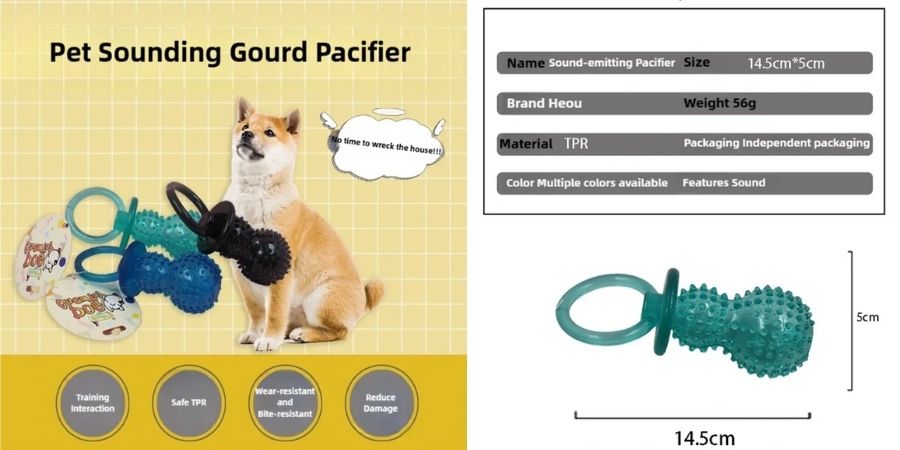
Key Features:
- Material: Made from TPR, it can withstand vigorous chewing without easily breaking or splintering, ensuring long-lasting use.
- Dental Care: The toy’s surface features soft protruding bumps. These bumps act as a natural dental cleaner, effectively removing plaque and tartar buildup as the puppy chews.
- Squeaky Fun: Equipped with a built-in sound whistle that produces a “BB” sound when chewed. This auditory stimulation captures dogs’ attention and encourages play.
- Size and Weight: With dimensions of 14.5cm x 5cm and a weight of 56g, this toy is perfectly sized for puppies of various breeds.
- Color Variety: Available in multiple vibrant colors, this toy stands out visually. The eye-catching color combinations are designed to grab dogs’ attention.
Dog Rope Toys Pet Heart Ring Cotton Rope Knot Toy
Rope toys also work well for teething puppies. They provide different textures and help clean teeth as your puppy chews. Always supervise your puppy with rope toys to prevent swallowing loose threads.
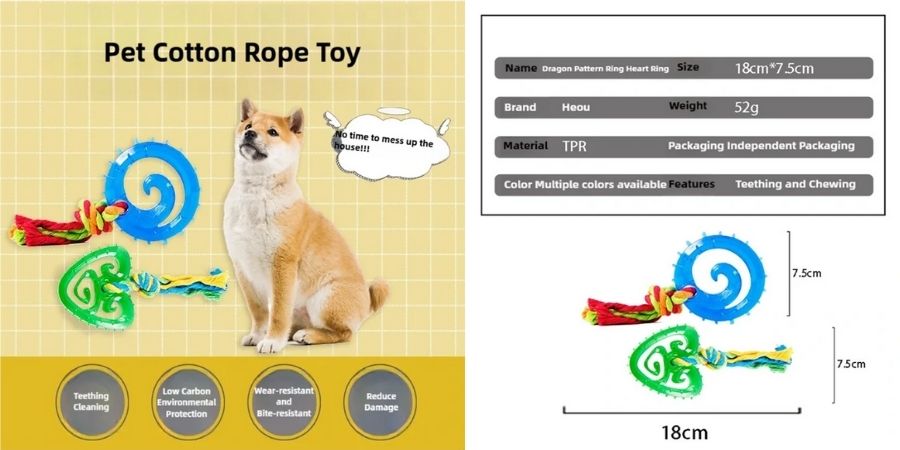
Key Features:
- Eye-catching dragon pattern
- 18×7.5cm, 52g, perfect for all dogs
- Soft spikes clean teeth while chewing
- TPR + cotton rope, safe and chew-resistant
2. Puzzle Toys – Ideal for Mental Stimulation
Mental stimulation is crucial for your 8-week-old puppy’s brain development. Puzzle dog toys challenge your puppy to think and problem-solve during play.
Simple treat-dispensing toys work best at this age. Your puppy pushes or moves the toy to release small treats inside. This keeps them busy while teaching cause and effect.
Dog Puzzle Toys PET Food Dispensing Toy Frozen Toys
Our Dog Puzzle Toys PET Food Dispensing Toy Frozen Toys are the perfect addition to any pet’s toy box, offering a unique blend of mental stimulation, physical activity, and cooling relief.
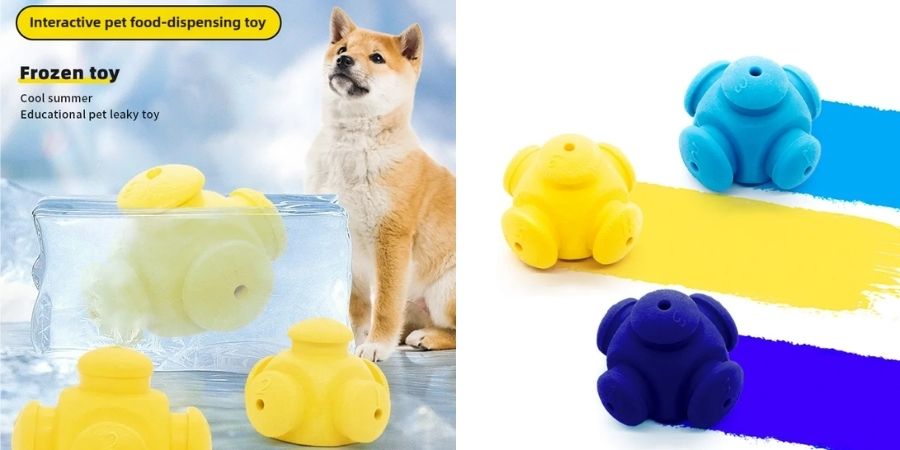
Key Features:
- FDA-Certified TPR Material: Made from high-quality, non-toxic TPR that is safe for pets to chew, even at extreme temperatures down to -20 degrees.
- Summer Refreshment: Perfect for freezing and giving to your dog on hot summer days to help them cool down.
- Leakage Design: The unique internal structure releases food slowly, stimulating your pet’s curiosity and encouraging interactive play.
- 5 Difficulty Levels: Five adjustable levels of food dispensing difficulty to challenge and educate your pet.
- Color Options: Available in blue, yellow, and navy blue, with customizable options to suit individual preferences.
- Versatile Sizes: Two sizes available (Large: 10x10x7cm, 159g; Small: 7x7x5.2cm, 60g) to cater to various pet sizes and needs.
3. Comfort Toys – Perfect for Soothing
Soft comfort toys with different textures appeal to young puppies. These plush toys help your puppy adjust to life away from their mother and littermates, providing emotional security during a stressful time.
Dog Squeaky Toys Plush Puppy Chew Corn Toys
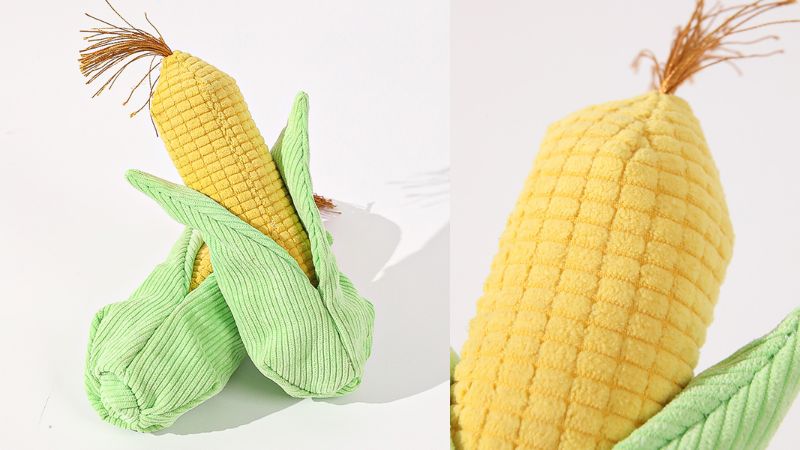
Key Features:
- Safe & Tough – Non-toxic, unbreakable
- Exciting Squeak – Prey-like sounds
- Gentle on teeth – Durable yet plush material
Keep your pet engaged with our corn-shaped plush dog chew toys!
Puppy Toy Maintenance Tips
Clean toys weekly to remove dirt and germs. Use warm, soapy water for most toys. Let them dry completely before giving them back to your puppy.
Check toys daily for damage. Look for small parts, tears, or broken pieces.
Wash plush toys in the washing machine on a gentle cycle. Use a mild detergent without harsh chemicals. Air dry or use low heat in the dryer.
| Toy Type | Cleaning Method | Frequency |
|---|---|---|
| Rubber toys | Warm soapy water | Weekly |
| Plush toys | Washing machine | Bi-weekly |
| Rope toys | Hand wash only | Weekly |
Sanitize toys after your puppy has been sick. This prevents germs from spreading. Use pet-safe cleaning products only.
Check toy labels for washing instructions. Some toys have special care needs. Follow the maker’s directions for best results.
Supervision and Safe Play Tips
Always watch your 8-week-old puppy during playtime. Young puppies explore the world by chewing on anything they find.
Limit play sessions to 15-20 minutes at first. Puppies get tired quickly and need lots of rest.
Watch for these warning signs:
- Aggressive chewing that damages toys
- Trying to swallow large pieces
- Loss of interest in safe toys
End playtime if your puppy becomes too excited or rough. Teaching calm behavior early helps create good habits.
Store all toys when not in use. This prevents your puppy from chewing unsupervised and keeps toys in better condition.
Frequently Asked Questions
What are the safest materials for puppy teething toys?
- Soft rubber toys designed for puppies are the safest option during teething. These toys give enough resistance to soothe sore gums without damaging baby teeth.
- Rope toys made from natural fibers work well for gentle chewing. Make sure the rope fibers don’t come loose and create choking hazards.
- Food-grade silicone offers another safe option. This material stays flexible and cleans easily.
- Avoid hard materials like antlers, bones, or tough nylon. These can crack or chip your puppy’s developing teeth.
How frequently should I replace my puppy’s toys to ensure safety and interest?
Check toys daily for signs of wear or damage. Replace any toy with loose pieces, cracks, or torn sections immediately. Most soft puppy toys need replacement every 2-4 weeks with regular use. Heavy chewers may need new toys more often.
What are some signs that a toy is appropriate for an 8-week-old puppy’s play needs?
A good rule is choosing toys bigger than your puppy’s mouth. Your puppy should show sustained interest without frustration. Appropriate toys give slightly when pressed. This indicates the material won’t damage developing teeth. Also, the toy should not leave marks or indentations when your puppy chews it. Deep bite marks mean the material is too soft.


